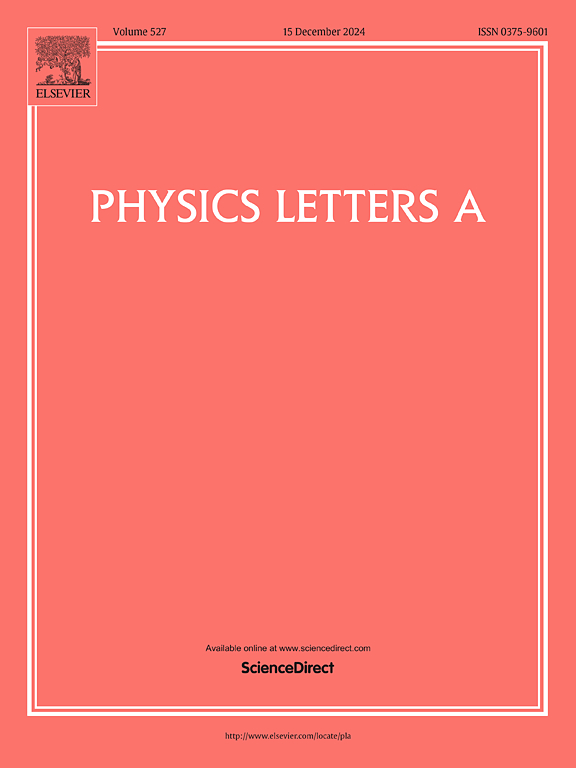Study of a transient triangular atom mirror behavior
IF 2.3
3区 物理与天体物理
Q2 PHYSICS, MULTIDISCIPLINARY
引用次数: 0
Abstract
The reflective properties of a three-atom system arranged in an equilateral triangle configuration are investigated, with a focus on collective dynamics driven by vacuum-induced dipole-dipole interactions. In the study, one or more atoms are initially prepared in an excited state, with collective damping and spontaneous emission considered. The aim is to observe periodic time-dependent exchange of populations among the atoms, which is interpreted as mirror-like behavior. Results reveal that an atomic mirror behavior emerges in two-dimensional systems, with a strong dependence on inter atomic distances. For separations smaller than about one fourth of the atomic wavelength, the system manifests periodic population exchange, resembling a stable triangular atomic mirror. The dynamics are significantly shaped by the initial state preparation, with initially symmetric superpositions generating synchronized oscillations and selective suppression of dipole-dipole interactions between specific atom pairs, leading to more stable and prolonged mirror-like behavior, even for relatively larger inter-atomic separations. These findings provide insights into the collective behavior of atoms in two-dimensional configurations, offering potential applications in the realms of quantum optics and quantum information processing.
瞬态三角形原子镜像行为的研究
研究了等边三角形排列的三原子体系的反射特性,重点研究了真空诱导的偶极-偶极相互作用驱动的集体动力学。在本研究中,首先在激发态下制备一个或多个原子,并考虑集体阻尼和自发发射。目的是观察原子之间周期性的随时间变化的居群交换,这被解释为类似镜子的行为。结果表明,原子镜像行为在二维系统中出现,与原子间距离有很强的依赖性。对于小于约四分之一原子波长的分离,该系统表现出周期性的人口交换,类似于一个稳定的三角形原子镜子。初始态制备显著地塑造了动力学,初始对称叠加产生同步振荡,选择性抑制特定原子对之间的偶极子-偶极子相互作用,导致更稳定和更长时间的镜像行为,即使对于相对较大的原子间分离。这些发现提供了对二维构型原子集体行为的见解,为量子光学和量子信息处理领域提供了潜在的应用。
本文章由计算机程序翻译,如有差异,请以英文原文为准。
求助全文
约1分钟内获得全文
求助全文
来源期刊

Physics Letters A
物理-物理:综合
CiteScore
5.10
自引率
3.80%
发文量
493
审稿时长
30 days
期刊介绍:
Physics Letters A offers an exciting publication outlet for novel and frontier physics. It encourages the submission of new research on: condensed matter physics, theoretical physics, nonlinear science, statistical physics, mathematical and computational physics, general and cross-disciplinary physics (including foundations), atomic, molecular and cluster physics, plasma and fluid physics, optical physics, biological physics and nanoscience. No articles on High Energy and Nuclear Physics are published in Physics Letters A. The journal''s high standard and wide dissemination ensures a broad readership amongst the physics community. Rapid publication times and flexible length restrictions give Physics Letters A the edge over other journals in the field.
 求助内容:
求助内容: 应助结果提醒方式:
应助结果提醒方式:


